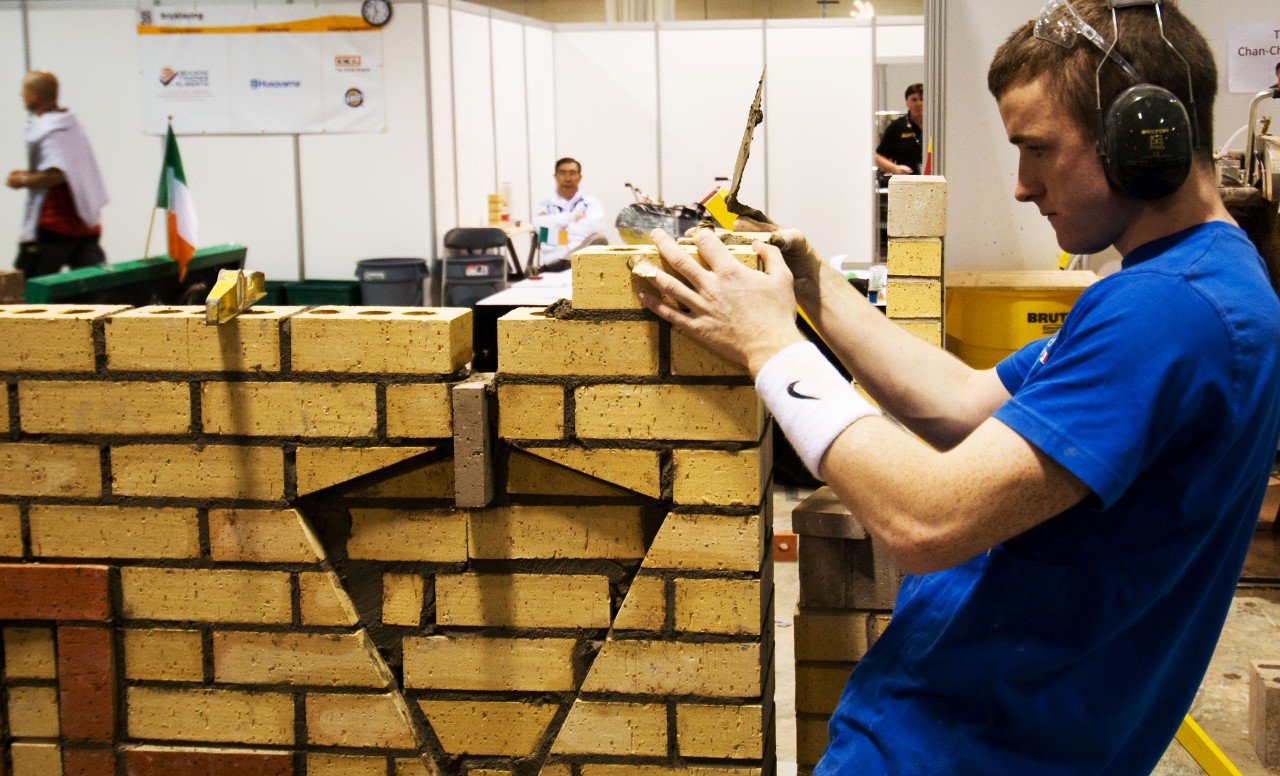Bricklaying 20
A bricklayer generally works on commercial and residential projects. There is a direct relationship between the nature and quality of the product required and the payment made by the customer. Therefore the bricklayer has a continuing responsibility to work professionally in order to meet the requirements of the customer and thus maintain and grow the business.
Bricklaying is closely associated with other parts of the construction industry, and with the many products that support it, normally for commercial purposes.
The bricklayer works internally and externally, including the homes of customers and on building sites, in all weather conditions on small and major projects. He or she will interpret drawings, set out and measure, construct and finish to a high standard.
Work organization and self-management, communication and interpersonal skills, problem solving, innovation and creativity, working accurately are the universal attributes of the outstanding bricklayer. Whether the bricklayer is working alone or in a team the individual takes on a high level of personal responsibility and autonomy.
From working safely and tidily with resilience and endurance through to exceptional planning and scheduling, concentration, precision, accuracy and attention to detail to achieve an excellent finish every step in the process matters and mistakes are largely irreversible and very costly.
With the international mobility of people the bricklayer faces rapidly expanding opportunities and challenges. For the talented bricklayer there are many commercial and international opportunities; however these carry with them the need to understand and work with diverse cultures and trends. The diversity of skills associated with bricklaying is therefore likely to expand.
Required skills
Endurance, concentration, planning and scheduling, varied hands-on skills, competent bricklaying, an eye for detail, tidiness, plan interpretation, problem solving and time management
Career info
The Bricklaying component of a house or building is usually the most visual aspect that people will see. The main responsibility for the bricklayer is to construct masonry components accurately and neatly according to the plans, which can often contain quite technical details.
No two projects are ever the same so the bricklayer has to be able to adapt their thinking and often find solutions to problems efficiently and effectively.
The bricklayer will interpret drawings, set out and measure, construct and finish to a high standard. They will begin with exceptional planning and scheduling skills, and continue work with concentration, precision, accuracy, and attention to detail to achieve an excellent finished project. They will work safely and tidily, with resilience and endurance.
Whether it is the brick work of a pathway, a wall or a house that next catches your eye, look closely at the expert work. In what you see, the outstanding bricklayer has demonstrated their keen skills in organization, communication, creativity and design, problem solving, and accuracy.
At the Competition
The Competitor is judged on:
- Safe working practices
- Interpretation of specifications
- Brickwork / blockwork construction
- Joint Finishing and presentation
- The work and skills need to be performed in a set timeframe.
The Test Project includes the construction of brick walls or surfaces of facing bricks and blocks of different materials. For example, decorative brickwork with projections and recesses in all possible bonds, sections of walls with segmental, semi-circular, triangular, 3 centre, flat, Gothic arches, curved walls, cavity walls as well as rendering to provide a smooth finish by use of sand, lime, cement, and paving with natural or artificial materials.

